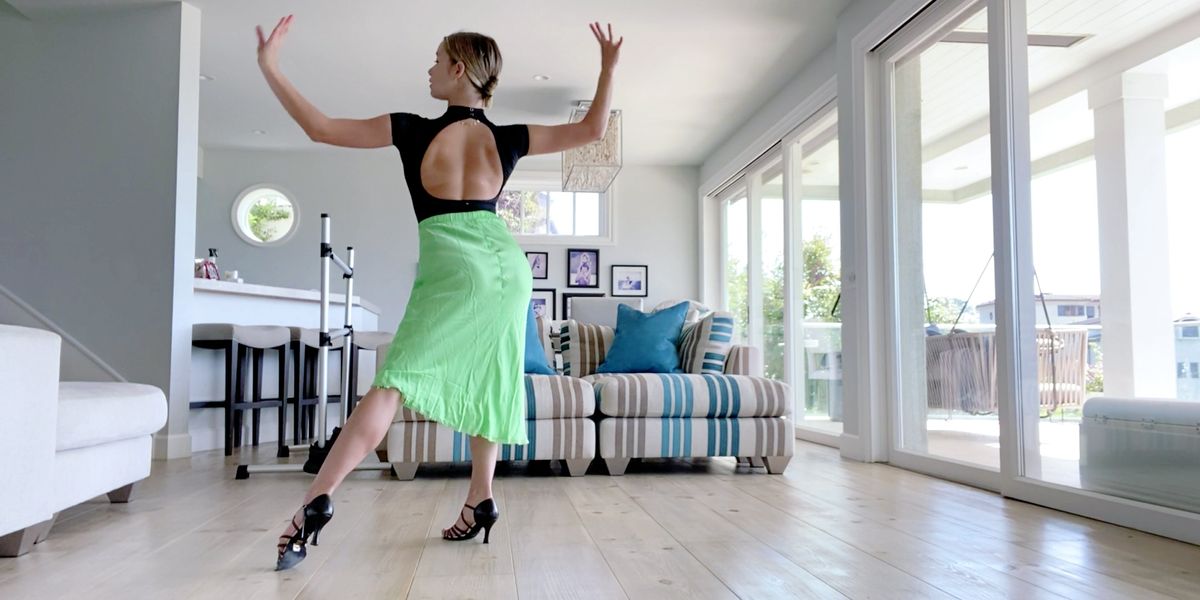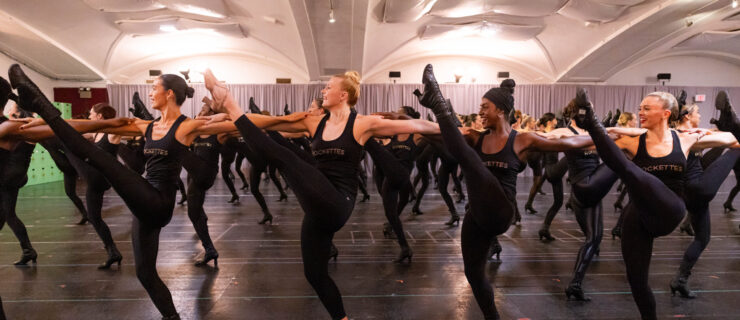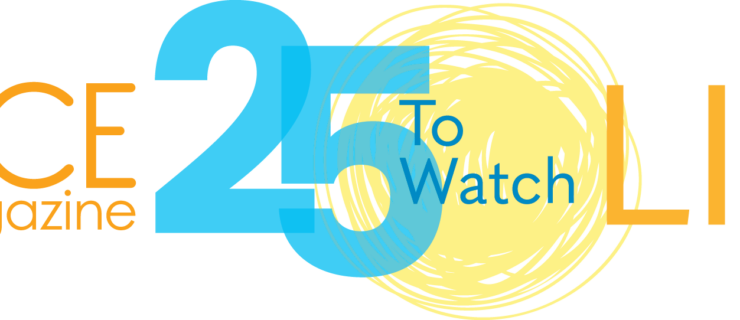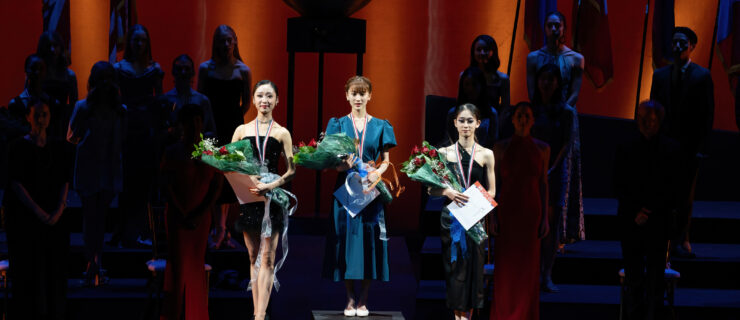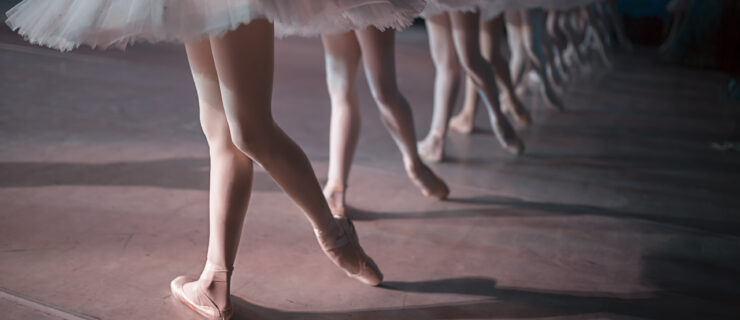Go Behind the Scenes of USC Kaufman’s Virtual Dance Festival
Now more than ever, the students of USC Glorya Kaufman School of Dance are embodying their program’s vision: “The New Movement.”
As the coronavirus pandemic stretches on, the dance world continues to be faced with unprecedented challenges, but USC Kaufman’s faculty and BFA students haven’t shied away from them. While many schools have had to cancel events or scale them back to live-from-my-living-room streams, USC Kaufman has embraced the situation and taken on impressive endeavors, like expanding its online recruitment efforts.
November 1 to 13, USC Kaufman will present A/Part To/Gather, a virtual festival featuring world premieres from esteemed faculty and guest choreographers, student dance films and much more. All semester long, they’ve rehearsed via Zoom from their respective student apartments or hometowns. And they haven’t solely been dancing. “You have a rehearsal process, and then a filming process, and a production process of putting it together,” says assistant professor of practice Jennifer McQuiston Lott of the prerecorded and professionally edited festival.
For a program that’s only in its sixth year, USC Kaufman continues to raise the bar for what it means to be a dance major—and being resilient and adaptive are chief components. Dance Magazine went inside the making of the festival.
Pivoting to Remote
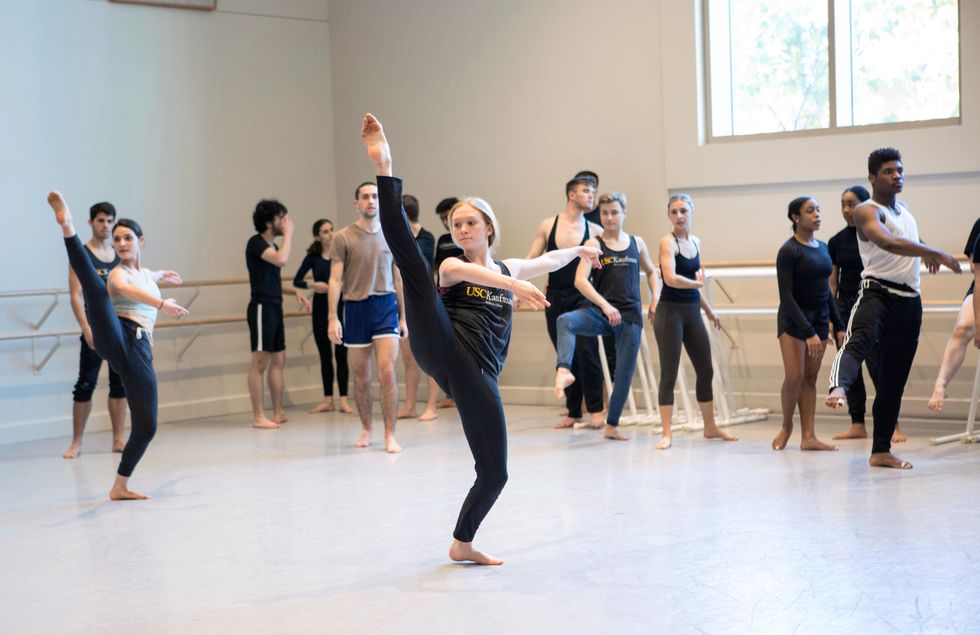
Sidney Ramsey (BFA ’21) in Saleemah E. Knight’s class last year
(Rose Eichenbaum, Courtesy USC Kaufman)
Before the semester started, USC Kaufman had planned on using a hybrid instruction model, with students taking some classes online and some classes in-person. Although a virtual festival was always part of the plan, the faculty had hoped that students could rehearse the bulk of the choreography together—albeit six feet apart.
When USC shifted to a completely remote model just [one week] before school started, faculty and staff had to reconsider not just the festival but their regular coursework. How would they re-create the atmosphere of a hip-hop cipher over Zoom, or those aha moments with a guest artist that seem exclusive to the alchemy of the studio?
Senior Sidney Ramsey, who’s double-majoring in dance and health and human science, says there have been some benefits to transitioning online. For one, she relishes the smaller class sizes—just seven students—for technique. In addition to the individual attention, she appreciates how her teachers have adapted their classes or given modifications for those with limited space. “We might not be doing quite as much traveling work, but they’ve integrated a lot of other strengthening and flexibility work.” For ballet, she might have a longer barre, or an in-place turning exercise in place of a waltz sequence.
For her hip-hop class with d. Sabela grimes, the move to Zoom required more creative solutions. “There’s such a great community energy at USC Kaufman,” says Ramsey. Grimes’ has tapped into that online by “spotlighting” dancers one at a time during virtual ciphers or encouraging them to send in music suggestions for class. “It’s the little things that make it so much fun,” says Ramsey.
World Premieres and New Ways of Working

USC Kaufman artist in residence Hope Boykin leading rehearsal last semester
(Mary Mallaney, Courtesy USC Kaufman)
In many college programs, dancing in a world premiere by a respected choreographer is often reserved for upperclassmen or limited to students chosen by audition. But at USC Kaufman, “everyone has something that’s being made on them,” says Lott. A/Part To/Gather features five new works (running November 5, 6, 12 and 13). Artist in residence and former Ailey dancer Hope Boykin has created pieces for the freshmen and juniors; assistant professor of practice E. Moncell Durden has made a work for the sophomores; adjunct assistant professor Saleemah E. Knight has choreographed on the juniors; and guest artist Francesca Harper has collaborated with the seniors.
“Every artist has had to reorient themselves to work in Zoom,” says Lott, though how they create remains vastly different. For the juniors, that meant being exposed to two entirely different processes. Boykin’s creation is riffing off a piece she initially made at USC Kaufman last spring, but was thwarted due to COVID-19. Together with the dancers, she’s sifting through last semester’s footage to build something old, something new. Meanwhile, Knight signed on to rehearsals with everything choreographed ahead of time and used videos of her own dancers mapping out the material as a tool. “I think that worked really well in a Zoom world,” says Lott.
The seniors’ work with Harper relied on a more collaborative choreographic process to create a movement time capsule. “That’s a microcosm of this macro thing that’s happening with the festival in general: We end up with these video works that are sort of time capsules. They’re really speaking to the moment that we’re in, but she took that a bit further,” says Lott. Harper encouraged the seniors to study and respond to Civil Rights speeches and interviews with activists. “She’s really trying to connect to the dancers’ movement practice with what they stand for and what they want to say in this moment.”
Making the Festival
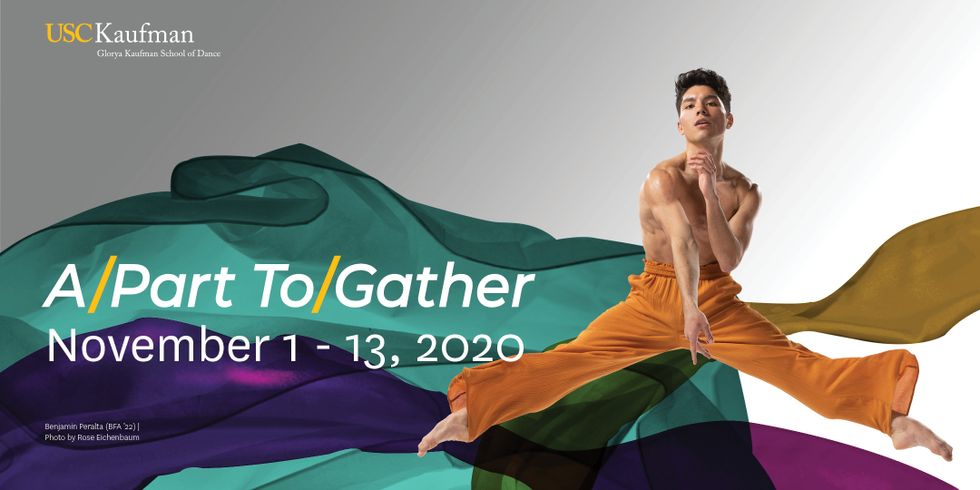
USC Kaufman dancer Benjamin Peralta (BFA ’22)
(Rose Eichenbaum, Courtesy USC Kaufman)
Aside from the choreography, launching an online festival presented a myriad of logistical challenges. “How do we present a work that was planned to be at least filmed in a studio space with students six feet apart but in the space together? How do we now pivot to present that work where every student now has to be their own production team and film themselves?” asks Lott.
To make it work, USC Kaufman recruited a few familiar alumni, including 2019 graduate Paulo Hernandez-Farella, to spend three weeks rehearsing with students in small breakout groups. With a trifecta of degrees—a BFA in dance, a minor in nonprofits and a master’s in public administration— Hernandez-Farella, who now dances with Ballet Hispánico, was more than qualified to step in. “Now that I’m a professional, everything is coming together,” they say. “I have all the amazing dance training I got at USC. I got to perform pieces by Forsythe and Kylián and Aszure Barton in New York and Tokyo. I got to experience what it was like touring, what it was like being in a repertory company. And then I also personally got that academic knowledge.” Returning to campus, if only virtually, is a proud full-circle moment for them, and they’re thrilled to be helping current students in their journeys.
This semester, the dance majors remain scattered, and their “studios” range from L.A. apartments with classmates to their parents’ living rooms across the country. Some dance on a square of marley or, like Ramsey, at space they’ve found at their hometown dance studios.
“We’ve been sending them costumes and backdrops,” says Lott. “We bought green screens and white screens and lights to send to them. It’s been a real makeshift home-studio situation, but they look amazing.”
Once filming wrapped, USC Kaufman’s in-house production team worked their magic, editing and weaving each student’s individual contributions into a cohesive set of dance films. Class of 2019 alumni Adam Agostino and Justin Epstein, who founded a production studio called RYBG, have also virtually returned to their alma mater to assist in the editing process.
Senior Spotlights and Film Screenings
A/Part To/Gather
isn’t only about showcasing premieres. The festival also includes invite-only Senior Spotlight webinars (November 4 and 11), allowing the outgoing BFAs a chance to shine for an audience of their faculty, families and representatives from the field. “Each one of the seniors these past few years, their projects are so amazing,” says Lott, likening the projects to master’s-level thesis work. Despite the uncertain state of dance, “we’re really excited to send them out into the world,” she says. “I know this has been insanely challenging for them, but they’ve kept the good faith and really have been working beautifully.”
A/Part To/Gather will be available online, starting November 1, via USC Kaufman’s website. Though the festival is free, most events require advance registration.
As the students and faculty keep pivoting to embrace the current moment, their work is a true reflection of the dance world. “Dancers using whatever they have available to them is a skill that I think is going to be critical in the future days of dance,” says Lott. “I think that if you as an individual artist can grab your glue and your tape and your living room and screen, and make something amazing happen, then that gives me a lot of hope for the field.” In a pandemic world, that’s exactly how the dancers of USC Kaufman keep making new movement.
